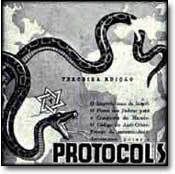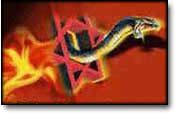 A leading expert on Auschwitz on Sunday denigrated the importance of the finding of plans for the construction of the extermination camp, which was reported this weekend in the German tabloid Bild. He said the documents have been known to scholars for many years and that they were not plans to build the extermination camp of Auschwitz-Birkenau, but rather earlier plans for the building of a forced labor camp.
A leading expert on Auschwitz on Sunday denigrated the importance of the finding of plans for the construction of the extermination camp, which was reported this weekend in the German tabloid Bild. He said the documents have been known to scholars for many years and that they were not plans to build the extermination camp of Auschwitz-Birkenau, but rather earlier plans for the building of a forced labor camp.
Prof. Robert Jan van Pelt, a internationally acknowledged expert on the planning and construction of Auschwitz, said that based on what he had seen on the Internet, there seemed to be nothing new about the documents. He was one of several scholars who expressed doubts about the significance of the Bild story.
Van Pelt, an architectural historian, said that copies of the plans of the stages of the camp's construction were also in the archive of the Polish National Museum at Auschwitz and in an archive in Moscow. He said that the source of the new copies was unclear since, according to Bild, the plans were found in an apartment in Berlin, whereas copies that were in the SS offices in Berlin were destroyed by Allied bombing in 1944. Van Pelt said he also doubted the authenticity of the signature of the SS chief, Heinrich Himmler, since such a high-ranking officer would not have signed such plans, and none of the copies he had ever seen bore such a signature.
Van Pelt also said the words "gas chamber" on one of the drawings meant a room in which disinfection of clothing was done by means of gas, and that the sketch is not of an extermination camp established in 1942, but rather of earlier plans for a huge concentration camp in which a force of 130,000 slave laborers was intended to work. Van Pelt suggested the plans might be fakes, motivated by the lucrative market in Nazi memorabilia and documents.
Van Pelt suggested the plans might be fakes, motivated by the lucrative market in Nazi memorabilia and documents.
Ralf Georg Reuth, the historian who wrote the piece in Bild, told Haaretz yesterday that the existence of such plans in Russian archives was known, "but German institutions have no originals, and therefore the importance of the finding of such original material is very great." Reuth would not elaborate on where and when the plans were discovered, or whether they had been submitted to experts for study.
http://www.haaretz.com/hasen/spages/1035958.html
Monday, 10 November 2008
Auschwitz expert: Blueprints found in Berlin not of death camp
Posted @
17:16
![]()
Post Title: Auschwitz expert: Blueprints found in Berlin not of death camp
Subscribe to:
Post Comments (Atom)
![[9_10_s22.jpg]](https://blogger.googleusercontent.com/img/b/R29vZ2xl/AVvXsEjTXnQay9wzz0E6nVHrVhaHKoq_zYXDqZjijHlNDQzj90MZzInrCuVX4ciFYCiBfZ7lhlgr2bBhhnl7ddWbhdih5JbXjQYbA605TNyiq046bQqjG2A4S-nHTmh1VBTQSG6tmc23wq47QQ/s1600/9_10_s22.jpg)




No comments:
Post a Comment